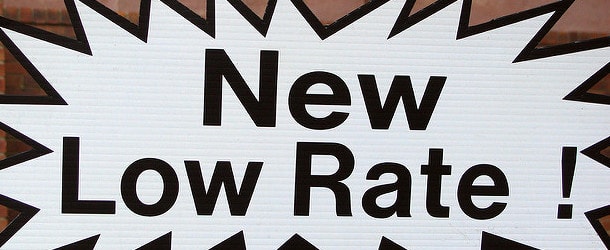
While the first quarter was booming for many mortgage lenders (see Quicken’s record month), the second quarter and beyond might be a different story as COVID-19 becomes a harsher reality.
Over just the past five weeks, some 26.4 million Americans have filed for unemployment. And that number is likely to grow, forcing more and more loans into forbearance.
Yesterday, the Federal Housing Finance Agency (FHFA) that oversees Fannie Mae and Freddie Mac said it would allow the pair to buy mortgages in forbearance, but with a big catch.
They are tacking on loan level pricing adjustments (LLPAs) of anywhere from 5% to 7%, which is a huge cost for lenders that unload their loans on the secondary market.
Ultimately, this new bone thrown out to loan servicers isn’t as good as expected, and for some probably totally worthless.
The exorbitant cost essentially makes it a lifeline to stay afloat, but not a practical option to keep pumping out new loans that immediately go into forbearance.
How Will Lenders Deal with New Mortgages That Sour Quickly?
- Most lenders sell off their home loans on the secondary market quickly after origination
- It’s a profitable business model as many loans stay current and investor appetite is strong
- But they may need to increase mortgage rates to absorb some of the risk of near-term forbearance
- And/or implement even harsher underwriting standards to improve credit quality to mitigate risk
We’ve already seen some big depository banks roll out tougher mortgage underwriting guidelines.
For example, Chase now requires a 700 FICO and 20% down if you’re a new mortgage customer. They also stopped accepting new HELOC applications.
Then there’s Wells Fargo, which will only give you a jumbo home loan if you’ve got $250,000 in the bank, their bank.
The scary part is these are depository banks that can hold onto their mortgages, unlike nonbanks and smaller lenders that mostly sell off their loans.
You see, most lenders sell their loans shortly after origination, but if there’s a risk they’ll be taking a 5-7% haircut, it no longer becomes a very lucrative business model.
Some correspondent lenders are also tacking on administrative fees of $1,000 for loans that enter forbearance within 60 days of purchase.
It’s kind of like playing hot potato, except there’s a good chance the potato is coming back to you scorching hot.
How High Is Your Credit Score? And How Safe Is Your Job?
- Many mortgage lenders have upped minimum credit scores required for a home loan
- They are also implementing overlays that go above and beyond what an investor might ask
- Especially on cash out refis, investment properties, jumbo loans, etc.
- It is also becoming more difficult to use assets or less conventional income to qualify
Industry wide, we’re already seeing higher minimum credit score requirements and increased scrutiny when it comes to employment because they can no longer throw caution to the wind.
So a borrower who just last month needed a 620 credit score to qualify may now need a 680 credit score or higher.
And it’s no longer good enough to just be employed, or to have been in the same job for the past two years.
Now, you’ll need to prove that you’re going to stay employed, somehow, even if you’re not quite sure. This might require some extra digging by the underwriter to determine how risky your job title is.
If you want a cash out refinance, an adjustable-rate mortgage, or financing on a second home or investment property, expect it to be a lot tougher.
Expect a lower maximum loan-to-value (LTV) ratio, a higher minimum credit score, a lower maximum loan amount.
Additionally, adjust your expectations when it comes to mortgage rates (to compensate for the risk of forbearance and subsequent cost).
Simply put, lenders need to be super conscientious to ensure new loans are of the utmost quality. It’s too big a risk to underwrite new loans that go into forbearance.
As noted last month, you really need to be careful when shopping mortgage rates in today’s volatile lending environment.
Mortgage companies that are better able to absorb the uncertainty will probably offer lower mortgage rates.
Those at the mercy of their investors will likely have to increase interest rates to offset risk.
So really take the time to shop around, and be prepared for a much more in-depth underwriting experience.
Read more: How is a mortgage in forbearance paid back?



